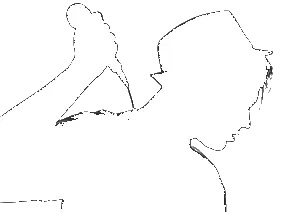Playing the piano for an extended period of time can cause trigger fingers in musicians.
This is because when playing the piano, your finger movement is facilitated by spaghetti like tendons that extend from your muscles in your forearm all the way down to the various attachment points along the front and back of your fingers.
Now as they pass along the route, they are guided by a tough fibrous material called retinaculums.
The sole aim of the retinaculums is to guide your tendons to their insertion points and also acts as a retaining band and fulcrum that keeps the tendons in close proximity to the bones of your hands.
Now when you overuse the tendons in your hands with activities such as playing the piano for a very long time, the sheath may become inflamed and the contents will then thicken
What happens is that it compresses the tendons as it passes through the sheath
As a result of this compression and constriction,the tendons begin to swell and this swelling tends to occur just before it passes through the sheath and the retinaculum.
In extreme cases, this might involve the flexor tendons of the hand.
This inflamed and enlarged flexor tendon will have difficulty passing through the swollen sheath and also passing through the retinaculum.
Symptoms – What does Trigger Finger Look Like?

Now that we have established that playing the piano for a long period of time causes trigger finger, what are some of the symptoms you experience
For someone who has trigger finger, you will notice that one or more of your fingers will be caught up or bent when you try to straighten them out.
It usually get stuck in a flexed position midway and might cause some pain when trying to straighten it out.
So what happens is that the person may then try to straighten it out physically with the other hand.
This is a painful procedure that might cause you to cry and you also hear an audible snapping sound when done.
This snapping is caused by the thickened tendon squeezing through the tunnel of swollen material.
Related: Here is an article I wrote on “How does a piano change pitch?
How is Trigger Finger Treated?
To fix trigger finger, you need to ensure that you treat is as soon as you notice difficulty moving your fingers.
If noticed and treated early then, then conservative measures can be taken to reduce the inflammation and normalize tendon movement.
Conservative measures such as chiropractic spinal and extremity adjustments will definitely help you normalize nerve flow to your hand tissues.
Another treatment you can consider is acupuncture and myofascial therapy which helps to release bound up strains in the fascia, muscles and tendons.
One thing you want to avoid by all means is delay and waiting till the your finger cannot straighten anymore
When this happens, conservative measures can still be considered but for a longer period of time – say 6 weeks.
If after 6 weeks you do not notice any relief, then more advanced treatment like corticosteroid injection and even surgery.
What To Do To Prevent Trigger Finger
With any condition of an inflammatory nature, the key to prevention is education, proper biomechanics, and common sense.
The biggest mistake people make is trying to work through the pain.
Those computer users making thousands of keystrokes and under the pressure of deadlines are susceptible to these injuries.
Also in danger is the musician who is under the gun to perfect a piece for an upcoming recital or gig.
Many musicians will practice 6 hours per day to learn musical pieces.
This puts a tremendous amount of strain not just on the tendons, but also on the musculature of the entire body.
An important aspect in prevention is to take frequent breaks while computing, playing an instrument, or enjoying your hobbies.
I recommend at least a 10 minute break every 45 minutes for the health person.
Taking a break does not mean heading to the coffee machine.
Breaks should be a time for stretching of the hands, arms, and neck.
If you’ve been sitting for the entire time, get up and move around, loosening up your legs and back.
Give your body the attention it needs to keep you going throughout the day.
Conclusion
Playing the piano for a long time without any breaks can cause trigger fingers.
And if this is not detected early and treated, it might cause permanent damage to you.
What you want to do is ensure that you take frequent breaks and stretch while playing the piano.
This will ensure that your body has the time to rest and actually heal so you can continue playing and play for a very long time.

is a wax bath helpful for healing trigger thumb?